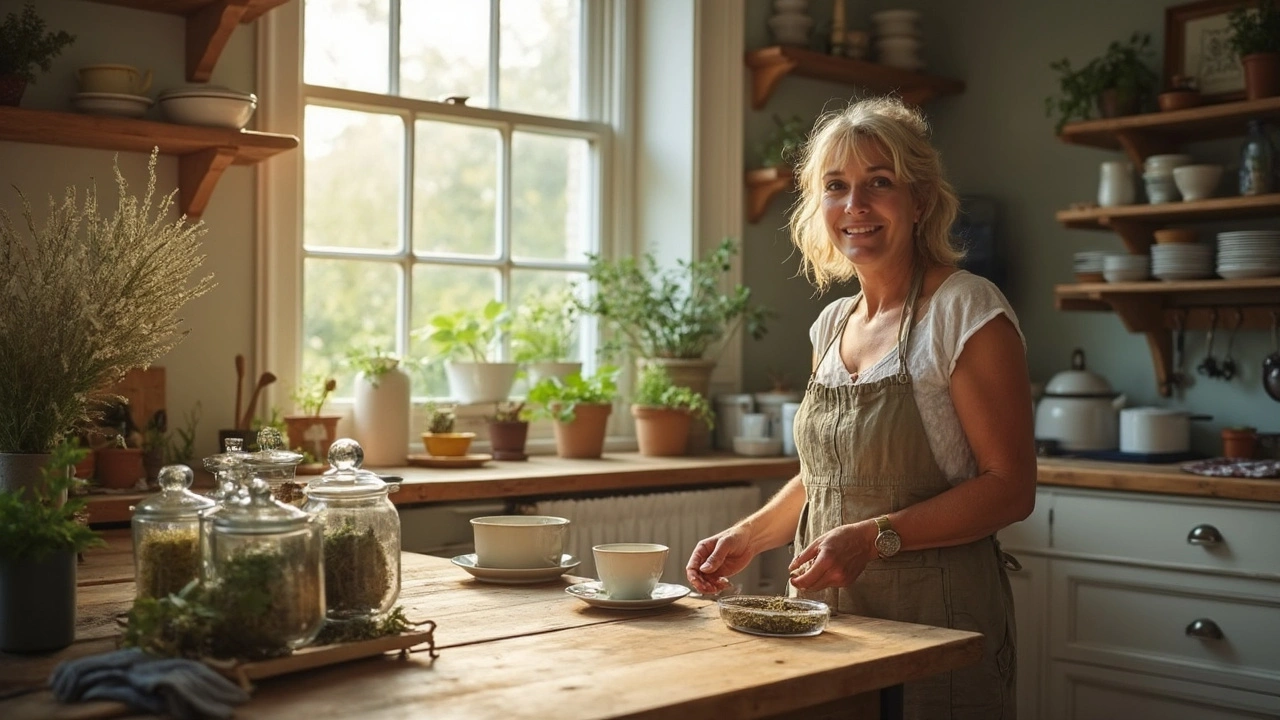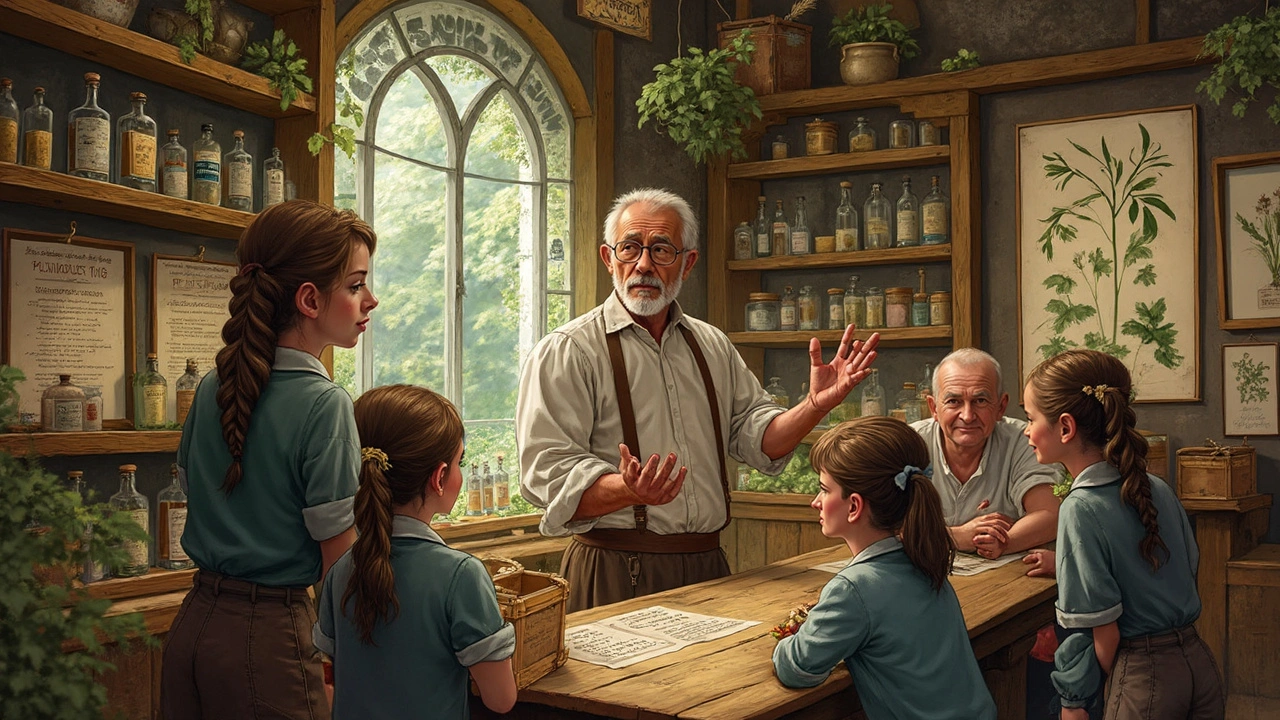Ever seen a skinny green plant with long, narrow leaves popping up at the edges of sidewalks or in your yard? That’s probably buckhorn plantain. Most people pull it out thinking it’s just another weed, but imagine if the secret to feeling better was growing right under your feet. People have used buckhorn plantain for centuries, not just as food, but as a home remedy for everything from bug bites to sore throats.
If you’re looking for a natural way to boost your health without spending a ton or relying on processed stuff, this humble plant might just surprise you. Buckhorn plantain is surprisingly easy to find, and you don’t need a green thumb to put it to use. You’ll find tips here on how to spot it, gather it safely, and make the most of its benefits—no wild foraging experience required.
- What Is Buckhorn Plantain?
- How to Identify and Harvest It
- Nutritional and Medicinal Benefits
- Practical Ways to Use Buckhorn Plantain
- Precautions and Tips for Beginners
What Is Buckhorn Plantain?
Buckhorn plantain (Plantago lanceolata) looks pretty plain at first glance—it’s got long, skinny leaves that almost look like blades of grass and tall, skinny flower spikes. You might see it called ribwort, narrowleaf plantain, or English plantain too. It’s native to Europe but grows almost everywhere now, even in city yards and on the side of roads.
This plant isn’t picky about soil, which explains why it pops up all over. Its leaves are tough and stay green even when the lawn goes brown in summer. Buckhorn plantain’s claim to fame is that it’s packed with bioactive compounds, including vitamins A, C, and K, along with minerals like calcium and potassium. Some research even claims it has more antioxidants than spinach.
| Nutrient | Amount per 100g (fresh leaves) |
|---|---|
| Vitamin C | 26 mg |
| Vitamin A | 740 IU |
| Calcium | 37 mg |
| Potassium | 228 mg |
If you’re wondering why herbalists and folks interested in a healthy lifestyle love this plant so much, it’s because it’s used for minor wounds, skin irritation, and more. The leaves contain plant compounds that are both soothing and protective.
"Buckhorn plantain is one of the most undervalued wild herbs. Its anti-inflammatory properties and nutritional content make it a huge asset for natural wellness." — Herbalist Lisa Ganora, Herbal Constituents
So, if you’ve got some in your yard, don’t rush to mow it down. Buckhorn plantain could easily become your go-to plant for first aid and simple home remedies. Plus, it’s legal and safe to use in most places, as long as you avoid spots with lots of pesticides or pollution.
How to Identify and Harvest It
If you want to spot buckhorn plantain in the wild, look for narrow, grass-like leaves that grow in a low rosette right at ground level. Each leaf is long and skinny, with clear parallel veins running from base to tip. Unlike its rounder cousin, common plantain, buckhorn's leaves are shaped more like skinny green spikes.
This plant often grows in yards, parks, fields, and even roadside. It’s a pretty tough little herb—it thrives even in packed-down soil or places where other plants barely hang on. You’ll notice skinny leafless stems popping up from the middle, each with a compact flower spike on top. The spikes look like short, bumpy brown candles, especially when they’re covered in tiny white or yellowish flowers during late spring and through the summer.
If you’re ready to harvest, grab some scissors or just pinch off the leaves near the base. Young leaves are best; they’re more tender and taste less bitter. Here’s a quick guide to safe and smart harvesting:
- Pick leaves from plants in clean areas, away from roads or spots where pets might go.
- Choose bright green, unbroken leaves. Older leaves are okay too, but they’re tougher and sometimes stringy.
- Give the plants a rinse at home to get rid of dirt and bugs.
- Leave enough leaves behind so the plant keeps growing—don’t strip the whole rosette.
Want to see how buckhorn compares to similar plants? Check out this comparison:
| Plant | Leaf Shape | Flower Spike | Location |
|---|---|---|---|
| Buckhorn Plantain | Narrow, lance-shaped | Short with dense bumps | Lawn, field, roadside |
| Common Plantain | Broad, oval | Chunky, rounded | Lawn, garden, pavement |
Spending a few minutes learning what buckhorn plantain looks like can pay off—next time you see those skinny leaves sprouting up, you’ll know you’ve found a handy, healthy green to try.

Nutritional and Medicinal Benefits
This is where buckhorn plantain really stands out. You might be surprised to learn how much goodness is packed into these unassuming leaves. They’re loaded with vitamin C, vitamin A, and calcium. One cup of fresh buckhorn plantain leaves can give you about 30% of your daily vitamin A needs. That’s not bad for a wild plant you can grab for free.
What really gets people talking are the plant’s medicinal perks. Buckhorn plantain is naturally anti-inflammatory and antimicrobial. Folks have been making quick poultices from crushed leaves forever to calm down bug bites, rashes, and small cuts. The sticky juice helps soothe the skin and keeps germs at bay so your body can heal faster.
| Nutrient | Benefit |
|---|---|
| Vitamin A | Supports your vision and immune system |
| Vitamin C | Fights cell damage and helps your skin repair |
| Calcium | Builds stronger bones and teeth |
| Phytonutrients | Battle inflammation and keep you healthy |
Buckhorn plantain also packs a punch when it comes to helping with coughs and colds. Some people brew it as a simple tea, and it’s said to calm a sore throat and even loosen up chest gunk. You’ll find folks in Europe and the US using it just like this.
“Buckhorn plantain has long been valued for its ability to reduce swelling and soothe irritated tissues, both inside and out,” says Dr. Emily Parker, a respected herbal medicine researcher. “It’s one of those traditional remedies that modern science is starting to appreciate.”
If you care about natural support for your immune system, buckhorn plantain is an easy pick. The fact it’s everywhere makes it even better—you don’t need fancy supplements to get these natural benefits.
Practical Ways to Use Buckhorn Plantain
Anyone can start using buckhorn plantain right away, and you don’t need any fancy gear. If you just want to add it to your meals, pick the young, tender leaves—they taste less bitter than the older ones. Chop a handful into salads or toss some in your smoothies. A lot of people say it’s like spinach but a bit tougher, so keep that in mind if you’re planning to cook it.
If you’re into teas, drying the leaves is super easy. Just lay them out on a clean towel for a few days. Once they’re dry, crumble and steep them in hot water for a simple drink. Buckhorn plantain tea is known for soothing sore throats and mild digestive upsets.
For the skin, this plant really shines. Nature lovers use the crushed fresh leaves as a quick fix for bug bites or small cuts. It’s as straightforward as it sounds: Clean the leaf, roll it between your fingers to get the juices out, and place it right on the spot. There’s real science behind it—buckhorn plantain contains antioxidants and anti-inflammatory compounds that help skin calm down.
- Buckhorn plantain poultice: Mash a few leaves and mix them with a hint of water to make a paste. Apply to bug bites, scrapes, or mild rashes and cover with a clean bandage for a few hours.
- Salad booster: Chop the tender leaves and add to any green salad for extra nutrition—one cup of fresh buckhorn plantain leaves brings vitamin C and potassium without the calories.
- Simple tea: Steep one tablespoon of dried leaves in hot water for about 8 minutes. Strain, let it cool a bit, and sip. A soothing drink, especially when you’re under the weather.
Here’s a quick look at the key nutrients in one cup of raw buckhorn plantain leaves, so you know what you’re getting:
| Nutrient | Amount |
|---|---|
| Vitamin C | About 25% of daily needs |
| Potassium | Approx. 160 mg |
| Fiber | Roughly 2g |
If you want to try making salves or balms, there are tons of simple recipes online that use buckhorn plantain along with olive oil and beeswax. This is a great way to have some skin-soothing cream ready when summer bug season hits.

Precautions and Tips for Beginners
First things first—make sure what you’re picking really is buckhorn plantain. It’s easy to confuse with other roadside plants if you’re new to foraging. Buckhorn plantain has long, thin leaves with parallel veins and a flower spike that looks a bit like a skinny brush. If you’re not certain, snap a photo and double-check with a reliable plant ID app or someone who knows their stuff.
When you’re just starting out, don’t harvest from places where there could be pesticide spray or heavy traffic pollution. The best places for picking buckhorn plantain are clean yards, small meadows, or even your community garden—basically anywhere you know what’s been put on the soil.
For anyone trying buckhorn plantain for the first time, start small to see how your body handles it. While most people don’t have side effects, it’s still a new leaf to your diet or home remedy kit. If you have a lot of allergies, especially to plants like ragweed, be extra careful—rare, but possible, allergy reactions can pop up.
- Rinse the leaves or seeds well before eating or making a tea. You never know what tiny bugs or dirt might be hiding.
- Use small amounts when adding it to smoothies or salads. Pay attention to how you feel.
- Pregnant or breastfeeding? There’s not enough solid research to say it’s totally safe, so best skip it or check with your healthcare provider first.
- If you’re on regular medicine (like blood thinners or blood pressure meds), talk to your doctor—a few herbal remedies can interact with meds, and it’s just smart to double-check.
Lots of people like to dry buckhorn plantain for herbal teas or make homemade salves for bug bites. Store dried leaves in a tight jar away from light and moisture, just like you would your tea or spices.
| Common Mistakes | How to Avoid Them |
|---|---|
| Harvesting from polluted areas | Pick only from clean, safe spots |
| Confusing with lookalikes | Double-check plant ID every time |
| Using too much at first | Start with small amounts to test tolerance |
| Not washing leaves | Always rinse thoroughly before use |
One last thing—just because buckhorn plantain is natural doesn’t mean it’s a cure-all. Think of it as one more tool for a healthier lifestyle. Use it wisely and pay attention to how your body reacts.
Mariam Kamish
April 29, 2025 AT 02:08Emma Hanna
April 30, 2025 AT 03:55Manish Pandya
May 1, 2025 AT 03:18Maeve Marley
May 1, 2025 AT 14:48Patrick Goodall
May 3, 2025 AT 02:35James Gonzales-Meisler
May 3, 2025 AT 23:49liam coughlan
May 5, 2025 AT 00:50Navin Kumar Ramalingam
May 5, 2025 AT 13:40Shawn Baumgartner
May 7, 2025 AT 10:11